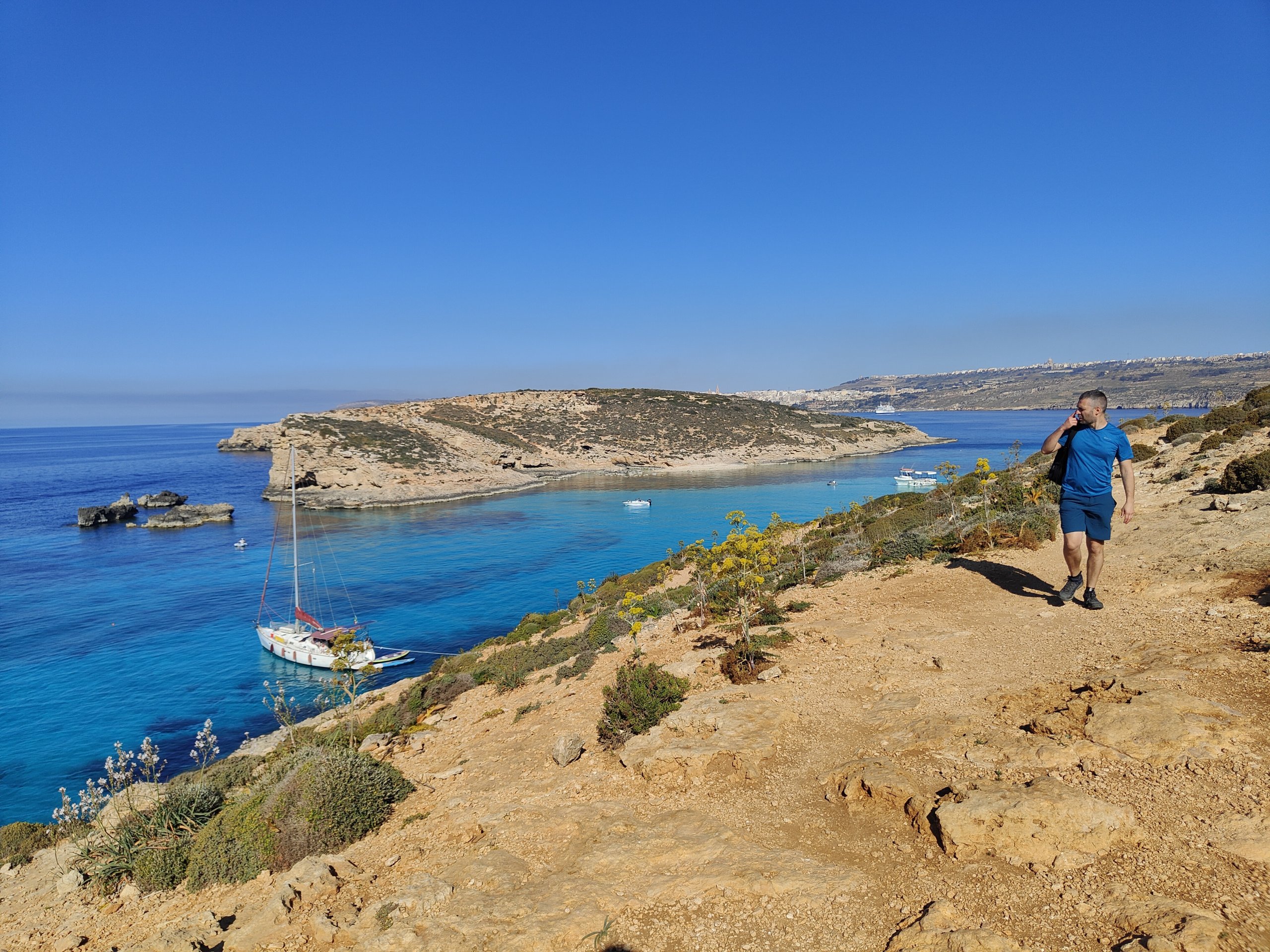

There’s a red phone booth, just like the ones you see all over London. But the sandy-colored stone of the surrounding houses might make you think you’re in southern Spain—until you stumble upon a Baroque church, and suddenly, you think you’re in Sicily. But you're not.
Malta is the perfect destination to travel off-season: the weather is mild year-round, rarely dropping below 10 degrees, and it’s not uncommon to find temperatures around 15-16 degrees in the middle of winter. This incredible weather makes it an ideal getaway outside the summer months.
But above all, Malta is the ideal choice for those who love surprises. You’ll find yourself noticing details that transport you to different places—flavors, colors, scenery, and sounds that hint at other countries, yet come together to create a unique, multifaceted identity waiting to be discovered in its every detail.

Three islands to discover: in order of size, Malta, Gozo, Comino. Only one-fifth of the main island—whose coasts lie just 80 km from Sicily, with whom it shares a wonderfully mixed identity shaped by the many cultures who have found a home in this island—is urbanized; the rest is still dominated by enchanting nature. In January, you can admire these lush green cliffs (once again, another place—are we perhaps in Ireland?) or enjoy fish soup and meat rolls under the warm sun in a charming piazza. Early spring is the perfect time to walk along paths dotted with fennel and clover, wild iris, and myrtle.
Here, life still follows the rhythm of the seasons and fishing, unfolding lazily as it has for centuries, fiercely attached to traditions untouched by tourism. The nature is perfect for exploring on foot, but only those who draw from all sides of Malta truly grasp its identity: from the allure of the Knights Templar to archaeology—stemming from a 7,000-year history—from food to nightlife, it’s a place where everyone can find something to love, perfect for everything you’re looking for in a vacation.

Malta boasts an incredibly long history, stretching over 7000 years. Here, you’ll find megalithic temples and underground labyrinths, Roman domus and catacombs, Neolithic stone circles, and medieval forts—just to name a few of its ancient historical treasures. A walking tour in Malta means moving through a history that’s constantly evolving, yet always in dialogue with the present, making it a vibrant place illuminated by its past.
The nature of Malta is stunning, perfect for exploring on foot: from salt pans carved into the rock to coves where the lake meets the sea, and waves push into the lagoons; coastal walks offer breathtaking views of the Mediterranean shoreline, with lighthouses, megalithic temples, and charming villages each with its own unique personality and often a local specialty. Again, many souls come together to create one astonishing and wonderfully rich identity.
Another factor that makes it perfect even for less avid walkers is its compact size—distances are not too long—and generally flat terrain, without major elevation changes. This is ideal for those who aren’t fully seasoned hikers but still want to admire spectacular landscapes: cliffs, rocky coastlines, ancient cities of golden stone, and charming little harbors—this is Malta, enchanting and full of surprises.
The smaller and wilder island of Gozo (just 61 square kilometers!) is perfect for a day’s exploration on foot. It will surprise you with rocky canyons, towering cliffs, fine sandy beaches, the medieval citadel of Victoria, and megalithic temples that, as the Maltese believe, were built with rocks carried by giants.
.png)
Malta's rich and varied identity is also reflected in its cities and villages, quite a number for an island just slightly larger than Elba. We have to start with its capital, Valletta, majestic in its beauty, thanks to the elegant palaces commissioned by the Grand Masters of the Order of St. John, who contributed to the city boasting over 300 monuments within its 55 hectares. It’s also a vibrant city, bustling with students who come to learn English and enjoy the lively nightlife, and rich in contemporary culture and architecture—especially in the City Gate area, designed by Renzo Piano. A short boat ride connects Valletta with Birgu, also known as Vittoriosa, one of the three gem cities along with Senglea and Cospicua, built by the Order of the Knights of Malta.
Mdina, the former capital of Malta, is known as "the silent city"—a maze of narrow streets among the golden buildings of this ancient and austere town, transporting you directly to a glorious past. Beyond its walls lies Rabat, with honey-colored buildings, considered the first Christian center on the island and known for housing the catacombs and the cave of St. Paul, Malta's patron saint, who, according to tradition, shipwrecked on the island in 60 AD and stayed here for six months, leaving an ever lasting trace on the Maltese Christian community.
.png)
Malta’s rich identity is not just about archaeology, nature, and excursions. Its diverse heritage, shaped by the many peoples who have inhabited the island over the centuries, is also expressed through its food. Maltese cuisine is aromatic, a blend of land and sea, and truly fusion in the most genuine sense. Think of thin, crispy bread (ftira) topped with tomatoes, olive oil, onions, capers, anchovies, and olives—perfectly paired with the island’s goat cheese, reminiscent of Greece.
Your taste buds will travel to Sicily with almond, ricotta, and candied fruit sweets, to Arabia with sesame and dates, to France with fish soups, and to the Middle East with legume creams—though here, instead of chickpeas, they use beans in a delicious spread perfect with water and semolina crackers.
`